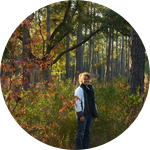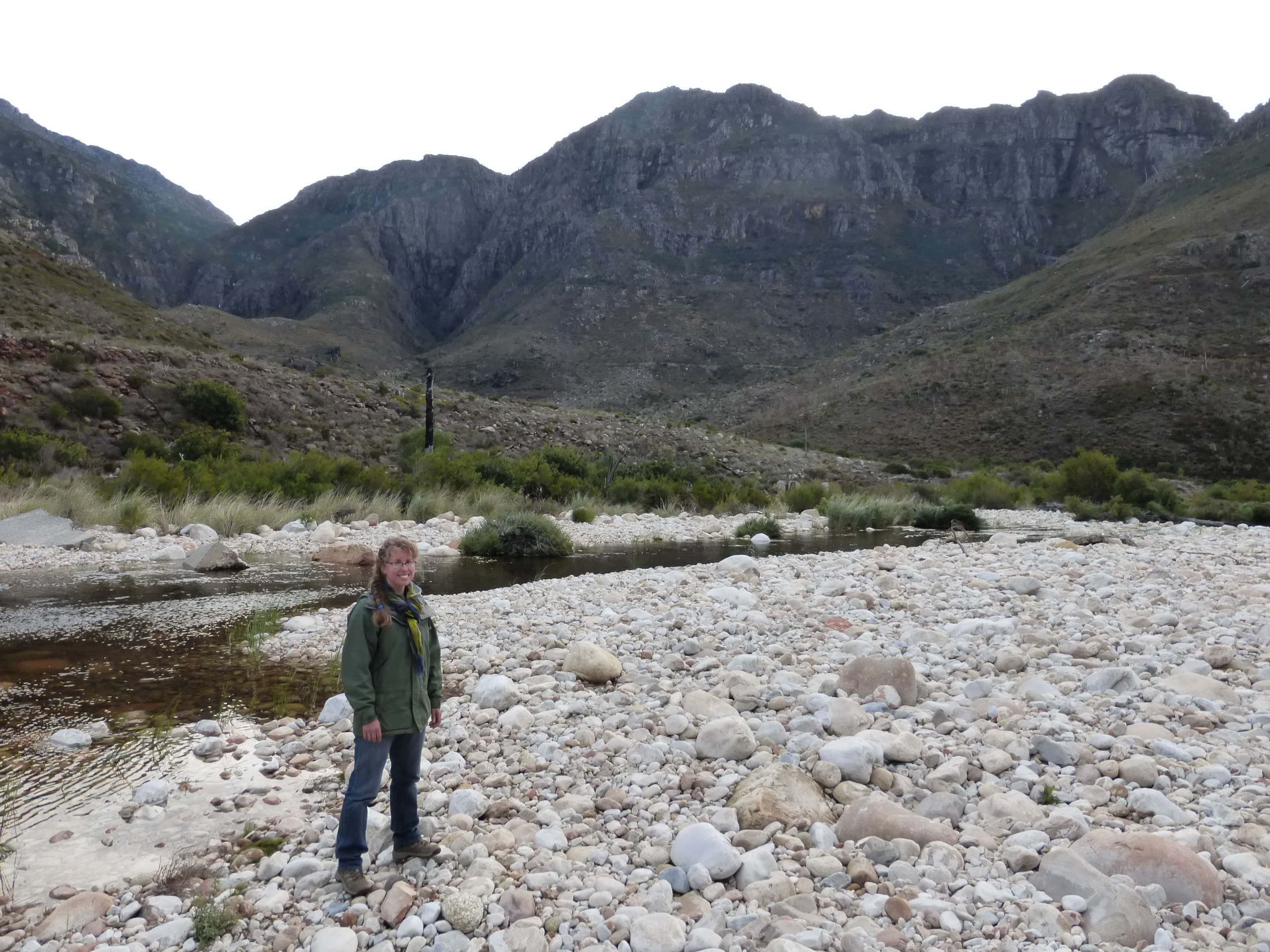About This Project
Tiny, cryptic moss frogs inhabit remote mountain seepages in South Africa's fiery fynbos biome. Non-native, invasive pine trees threaten this biodiversity hotspot, but restoration efforts are underway. In this project we will compare methods and outcomes of mountain fynbos restoration projects to answer the question: How do invasive pine removal strategies affect moss frog populations and effectively restore fynbos?
Ask the Scientists
Join The DiscussionWhat is the context of this research?
Invasive plants are a widespread threat to biodiversity in South African fynbos. Natural fires maintain biodiversity, but they also facilitate invasion by nonnative, fire-adapted trees and shrubs.
Tiny, endemic Moss Frogs inhabit small streams in high-elevation fynbos. Alien trees have invaded much of their range, and are hypothesized to cause drying of seepage habitat and increased intensity of fire.
The South African government has implemented a rigorous control program for removing invasive plants. Removal techniques include clearing invasives and/or burning the fynbos to kill invasive seedlings. However, moss frog ecology is largely unknown, and we urgently need information on how invasive species removal strategies can both successfully conserve moss frog populations and restore fynbos.
What is the significance of this project?
Fynbos shrublands are one of the world's six floristic kingdoms, and support a number of endemic plant and animal species found nowhere else on earth. The western Cape region harbors more than half of South Africa's frog species, many of which are on the IUCN Red List. It is entirely unknown how invasive species or removal strategies affect frog populations and if these methods promote their conservation.
This project will be the first to examine how invasive species control efforts are successful in removing invasives, restoring fynbos, and conserving endemic animal species.
What are the goals of the project?
- Identify mountain fynbos restoration sites from which invasive pines were cleared within the past decade.
- Document the control techniques that were used (burning, removing invasives, both cutting and burning).
- Use audio recording devices to estimate moss frog call density at these sites.
- Assess native fynbos vegetation recovery.
- Compare frog density and vegetation data at treatment sites to data from pristine sites to assess the success of restoration site trajectories.
Budget
The University and associated government agency (via the Working for Water program) have provided funds for travel to the research sites. Frog monitoring equipment is also supplied. There are no funds for my travel to/from the country or research VISA, so this funding will get me on the ground and in action!
The VISA requires in-person travel to the embassy, so this cost includes application fees and travel.
Meet the Team
Team Bio
I am a broadly-trained ecologist with an addiction for unraveling nature's mysteries. In particular, I have a passion for studies that directly assist ecosystem management and restoration. Since my sophomore year at UMass Amherst (B.S. Biology, 2009), my research has taken me from Massachusetts salt marshes to Kansas tallgrass prairie, the rural plateaus of China, the rainforests of Australia (see my blog here: Australian Adventure blog), and finally, to the beautiful, fiery pine savannas of the southeastern US. There I explored herpetology, fire, and restoration in my doctoral research projects. I am interested in how other countries address global concerns of conservation and restoration, particularly in fiery ecosystems. I believe that a global perspective offers exceptional insight into how we can effectively address conservation issues around the world.
Press and Media

Story in UofSC Today about my PhD research
The Wildlife Society's article about rattlesnakes and fire
Publications:
Fill, J. M., W. J. Platt, S. M. Welch, J. L. Waldron, and T. A. Mousseau. In review. Changing models for restoration and management of fiery ecosystems. Forest Ecology and Management.
Fill, J. M., J. L. Waldron, S. M. Welch, and T. A. Mousseau. 2015. Using multiscale spatial models to assess potential surrogate habitat for an imperiled reptile. PLOS ONE 10(4): e0123307.
Fill, J. M., J. L.Waldron, S. M. Welch, M. Martin, J. Cantrell, S. H. Bennett, W. Kalinowsky, J. Holloway, and T. A. Mousseau. 2015. Breeding and reproductive phenology of Eastern Diamond-backed Rattlesnakes (Crotalus adamanteus) in South Carolina. Journal of Herpetology. In press. Online Early
Fill, J. M., S. M. Welch, H. Brown, J. L.Waldron, A. S. Weakley, and T. A. Mousseau. 2014. Life history correlates of plant endemism in longleaf pine ecosystems. Southeastern Naturalist 13(3):484-492.
Fill, J., A. Freeman, G. Story, and T. Curran. 2013. Predation of the cryptic rainforest rodent (Pogonomys sp.) by a carpet python (Morelia spilota). Australian Mammalogy 35(2): 224-226
Fill, J.M., S.M. Welch, J.L. Waldron, and T.A. Mousseau. 2012. The reproductive response of an endemic bunchgrass indicates historical timing of a keystone process. Ecosphere 3(7):art61.
Fill, J., P. McBride, A.J. Powell, L.K. Shanahan, J.R. Stark, A.B. Freeman, and T.J. Curran. 2012. Diet of Amethystine (Morelia kinghorni) and Carpet Pythons (Morelia spilota) in North Queensland, Australia. Herpetological Review 43(1): 30-34.
Klug, P.E., J. Fill, and K.A. With. 2011. Spatial ecology of Eastern Yellow-Bellied Racer (Coluber constrictor flaviventris) and Great Plains Rat Snake (Pantherophis emoryi) in a contiguous tallgrass prairie landscape. Herpetologica 67(4): 428-439.
Additional Information
Welcome! Please feel free to ask me questions, make comments, start a conversation, or any other way you'd like to use this site to engage with me in my research!
And
Welcome to my field site in the mountains near Stellenbosch!

Ten years ago, these slopes were covered by invasive Pinus pinaster. These are the mountains of the Berg River catchment, an important source of water for Cape Town.
Working for Water teams used the logging roads you see on the slopes to cut and remove the pines. Some, however, are growing back from seed.
On the slopes where you see the green vegetation are seeps: where groundwater seeps from the earth to feed the river, and where there are, we hope, frogs!

Project Backers
- 39Backers
- 109%Funded
- $3,004Total Donations
- $77.03Average Donation



